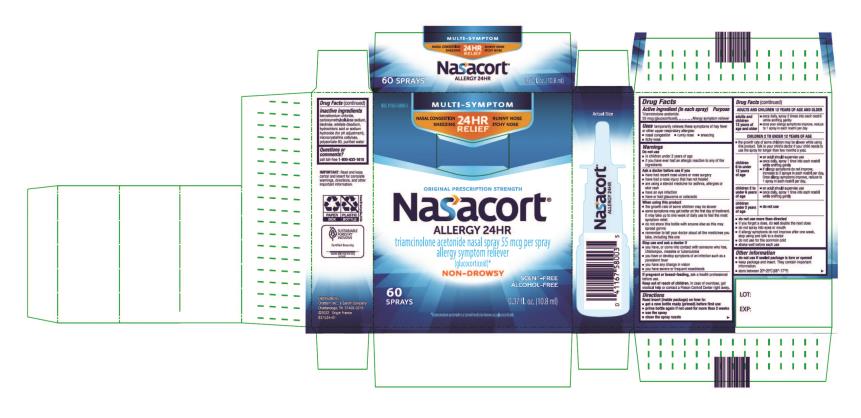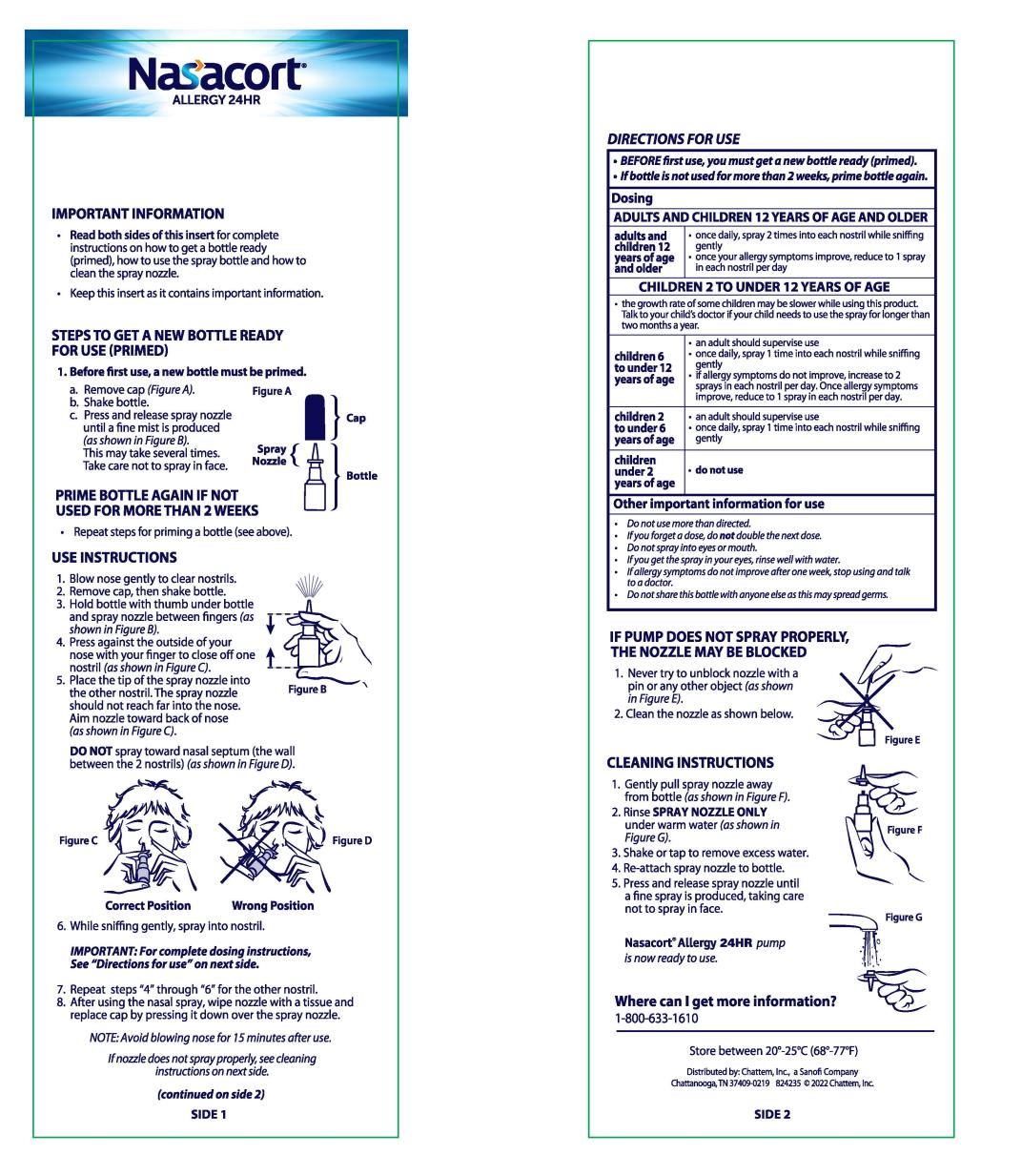Nasacort Allergy 24hr | Triamcinolone Acetonide Spray, Metered while Breastfeeding

What is Nasacort Allergy 24hr | Triamcinolone Acetonide Spray, Metered used for?
Brief: Allergy symptom reliever
Can I continue breastfeeding if I am using Nasacort Allergy 24hr | Triamcinolone Acetonide Spray, Metered? How long does it stays in breast milk?

Nasacort Allergy 24hr | Triamcinolone Acetonide Spray, Metered Breastfeeding Analsys
Triamcinolone acetonide while Breastfeeding
Low RiskCAS Number: 76-25-5

A corticosteroid with a mainly glucocorticoid action and anti-inflammatory effects of similar strength to that of prednisolone.Systemic administration (oral, injection), inhaled (bronchial, nasal), intra-articular, intravitreous and topical.Indicated in the treatment of rheumatic diseases and collagen, inflammatory bowel disease, dermatitis, asthma, rhinitis, etc. This comment is about systemic, intra-articular and ophthalmic triamcinolone. Since the last update we have not found published data about its excretion in breast milk. Administration of intra-articular triamcinolone in the wrist (Smuin 2016) or via an epidural in the cervical area (McGuire 2012) caused a temporary decrease in the production of milk lasting between one and four weeks that was resolved in both cases via the continuation and stimulation of breastfeeding. The same has occurred, with a shorter duration, following the intra-articular administration of methylprednisolone (Babwah 2013). Although after the administration of triamcinolone, both intraocular (Shen 2010, Degenring 2004), and epidural (Hooten 2016), elimination half-life is about 22-25 days, plasma levels are indetectable or very low, not clinically significant. The maximum concentration peak after these types of administration occurs at 24 hours (Hooten 2016, Shen 2010, Degenring 2004). There is consensus among experts that, in general, neither systemic corticoids nor inhaled ones present a breastfeeding contraindication (National Asthma Education 2004). The low plasma levels obtained after ophthalmic administration suggest a very low risk during breastfeeding. Corticoids are of commonally used in pediatrics and have no side effects when they are used in isolation or in short-term treatments. Until there is more published data about this drug in relation to breastfeeding, alternatives with a safer known pharmacokinetic profile for breastfeeding may be preferable (greater protein binding, lesser half-life and less oral bioavailability), especially during the neonatal period and in case of prematurity. If used during breastfeeding it is advisable to monitor milk production. See below the information of these related products:

What should I do if I am breastfeeding mother and I am already exposed to Nasacort Allergy 24hr | Triamcinolone Acetonide Spray, Metered?
Nasacort Allergy 24hr | Triamcinolone Acetonide Spray, Metered is in the category of low risk, if you have already used it then its not a big deal if health and behavior of baby is good. However your health care provider shall be aware of the fact that you have used Nasacort Allergy 24hr | Triamcinolone Acetonide Spray, Metered so you should inform him based on your convenience.
My doctor has prescribed me Nasacort Allergy 24hr | Triamcinolone Acetonide Spray, Metered, what should I do?
Though Nasacort Allergy 24hr | Triamcinolone Acetonide Spray, Metered dose not comes in category of safe drugs rather it comes in category of low risk but if your doctor is aware that you are breastfeeding your baby and has still recommended it then its advantages must be outweighing the risks.
If I am using Nasacort Allergy 24hr | Triamcinolone Acetonide Spray, Metered, will my baby need extra monitoring?
Not much monitoring required while using Nasacort Allergy 24hr | Triamcinolone Acetonide Spray, Metered
Who can I talk to if I have questions about usage of Nasacort Allergy 24hr | Triamcinolone Acetonide Spray, Metered in breastfeeding?
US
National Womens Health and Breastfeeding Helpline: 800-994-9662 (TDD 888-220-5446) 9 a.m. and 6 p.m. ET, Monday through Friday
UK
National Breastfeeding Helpline: 0300-100-0212 9.30am to 9.30pm, daily
Association of Breastfeeding Mothers: 0300-330-5453
La Leche League: 0345-120-2918
The Breastfeeding Network supporter line in Bengali and Sylheti: 0300-456-2421
National Childbirth Trust (NCT): 0300-330-0700
Australia
National Breastfeeding Helpline: 1800-686-268 24 hours a day, 7 days a week
Canada
Telehealth Ontario for breastfeeding: 1-866-797-0000 24 hours a day, 7 days a week
